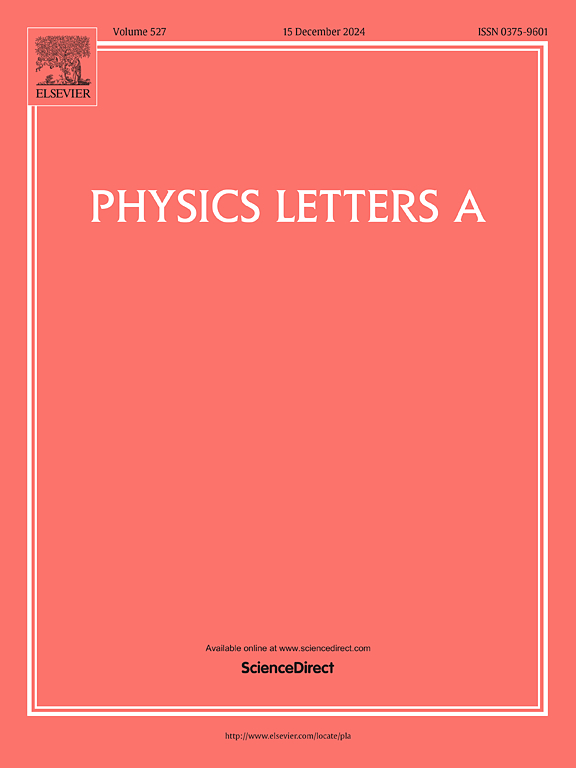Perfect absorption properties of a near-infrared super-surface perfect absorber based on a multilayer subwavelength array structure
IF 2.3
3区 物理与天体物理
Q2 PHYSICS, MULTIDISCIPLINARY
引用次数: 0
Abstract
In this paper, we design a near-infrared metasurface perfect absorber. The absorber consists of a substrate, a chromium(Cr) layer and a four-layer nanocirlce array. The chromium(Cr) layer is on the silicon dioxide(SiO2) substrate, and the four-layer nanocircle array on the top, which is composed of silicon(Si), magnesium fluoride(MgF2), chromium(Cr) and gallium(GaAs) nanocircles with the total thickness of 880nm. The absorption is above 0.913 in the absorption band, where the top absorption is 0.991 and the average absorption is 0.963. Due to the fully symmetric structure, the absorber is not affected by polarization. It can be observed that as the angle of incidence varies from 0° to 60°, the average absorption rate of the absorber does not change significantly. This data indicates the structure's extreme insensitivity to the angle of incident light. Our designed near-infrared metasurface perfect absorber is of good absorption performance and great application prospect in optical communication, broadband thin-film thermal emitter, thermal photovoltaic cell and solar cell. In addition, the high absorption performance of the absorber is insensitive to the tolerance of paramaters which is one of the attraction of practical application.
求助全文
约1分钟内获得全文
求助全文
来源期刊

Physics Letters A
物理-物理:综合
CiteScore
5.10
自引率
3.80%
发文量
493
审稿时长
30 days
期刊介绍:
Physics Letters A offers an exciting publication outlet for novel and frontier physics. It encourages the submission of new research on: condensed matter physics, theoretical physics, nonlinear science, statistical physics, mathematical and computational physics, general and cross-disciplinary physics (including foundations), atomic, molecular and cluster physics, plasma and fluid physics, optical physics, biological physics and nanoscience. No articles on High Energy and Nuclear Physics are published in Physics Letters A. The journal''s high standard and wide dissemination ensures a broad readership amongst the physics community. Rapid publication times and flexible length restrictions give Physics Letters A the edge over other journals in the field.
 求助内容:
求助内容: 应助结果提醒方式:
应助结果提醒方式:


